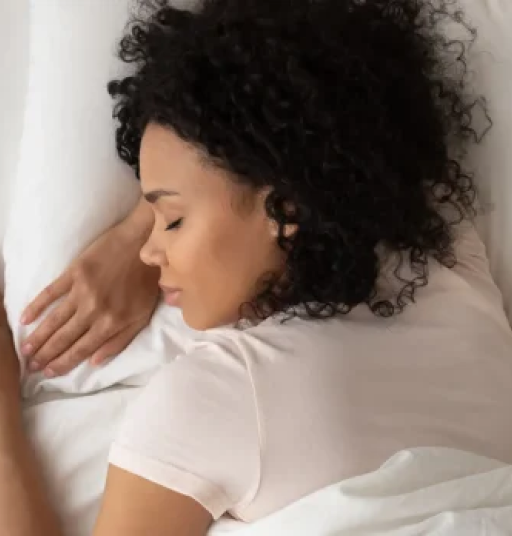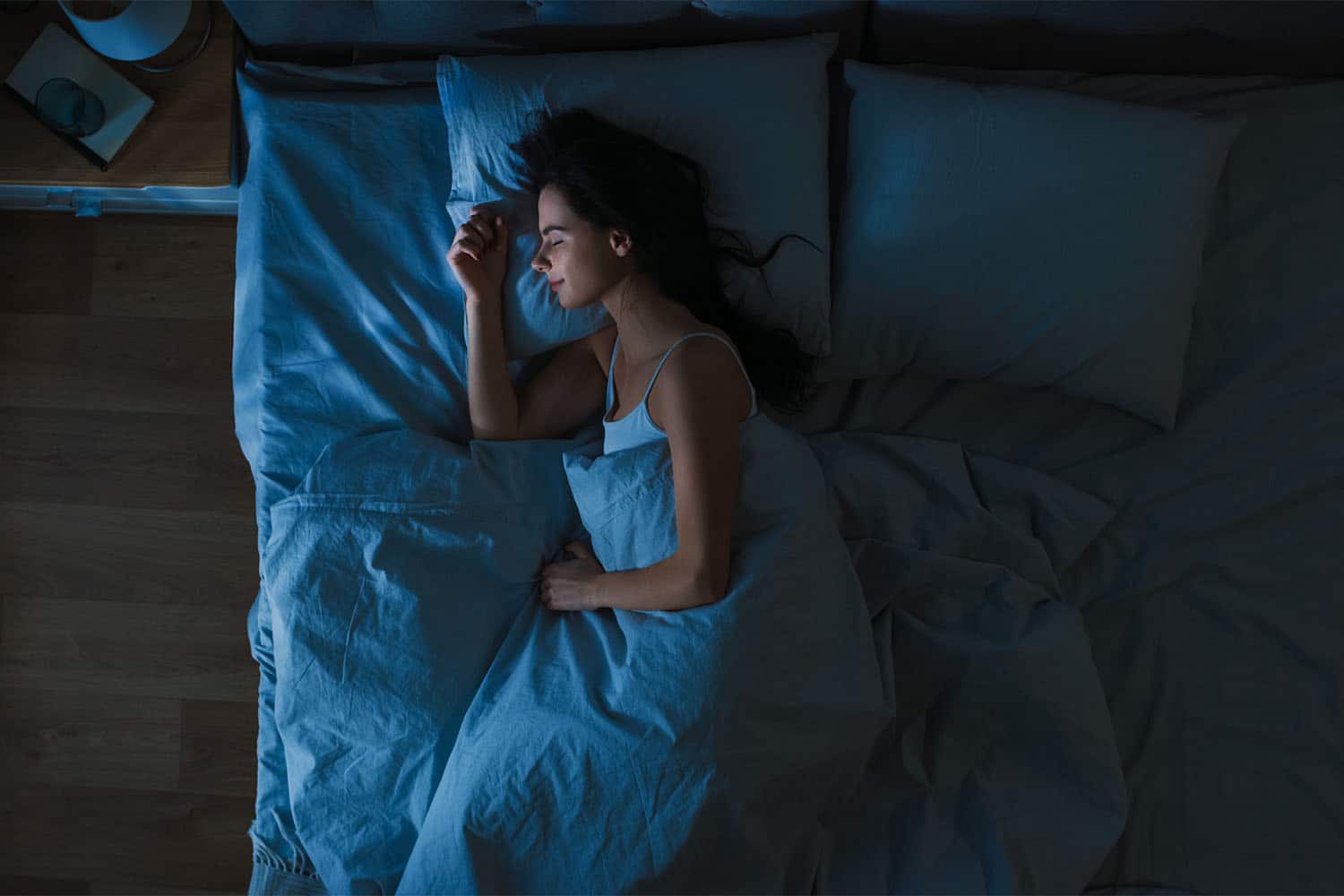Night Routine Secrets: What Sleep Experts Do Before Bed
Have you ever found yourself lying awake, staring at the ceiling, wondering why sleep feels so elusive? You're not alone. More than 70 million Americans struggle with sleep disorders, making the quest for quality rest more important than ever.
A night routine isn't just about brushing your teeth and turning off the lights. It's a thoughtful sequence of activities that sends a clear message to your brain: it's time to wind down and prepare for sleep. Your brain actually begins this natural winding-down process hours before bedtime as part of your sleep-wake cycle. When you create a consistent bedtime routine, you're essentially training your brain to feel tired at the right time.
The power of these routines can be surprising. Something as simple as spending five minutes writing a to-do list can significantly speed up how quickly you fall asleep. It's these small, intentional actions that can make all the difference.
We've gathered insights from sleep experts to uncover their proven techniques for better sleep. Let's explore the science behind why a warm shower an hour before bed can improve your sleep quality, and discover why reading a novel reduces stress levels by 68% more effectively than taking a walk. These nighttime habits might just be the key to transforming your sleep experience.
What Sleep Experts Say About Night Routines
Sleep experts are clear on one thing: consistent night routines form the foundation of quality sleep. Most people get caught up in counting hours, but sleep specialists know that regularity and routine matter just as much as duration when it comes to healthy sleep habits.
The Science Behind Bedtime Routines
Your sleep system is far more sophisticated than a simple on-off switch. Two biological processes work together to regulate when you feel tired and when you feel alert. First, there's something called the sleep homeostatic drive — think of it as your body's internal timer that tracks how long you've been awake. The longer you stay awake, the stronger this drive becomes, building up the pressure to sleep.
The second process is your circadian system, an intrinsic pacemaker involving pathways from the suprachiasmatic nucleus to the hypothalamus. This system acts as your body's master timekeeper.
At the center of your sleep-wake cycle lies a remarkable cluster of about 20,000 nerves in your brain called the suprachiasmatic nucleus, or SCN. Scientists often refer to this as your "master clock" or "circadian pacemaker" because it coordinates all the other circadian rhythms throughout your body — including the ones that help regulate your mood.
The SCN is incredibly sensitive to light exposure, using light as its primary cue for timing biological processes. During daylight hours, it sends signals that promote alertness and wakefulness. As evening approaches and light fades, it triggers melatonin production to help you fall asleep. Understanding this connection explains why maintaining consistent light exposure patterns through regular bedtimes helps keep your circadian timing stable.
Dr. Anna Zisberg, assistant professor at the University of Haifa, puts it this way: "We predicted that there would be a relationship between routine activity patterns and sleep quality, since theoretically sleep patterns and other everyday life activities are related and potentially synchronized".
How Routines Impact Sleep Quality
The research on bedtime routines is compelling. Studies consistently show that these routines improve multiple aspects of sleep quality. A study published in the journal SLEEP found that when people had more stability in their daily routines, they fell asleep faster, slept more efficiently, and experienced better overall sleep quality.
What's particularly interesting is that routine benefits seem to follow a dose-dependent relationship — the more consistent you are, the better your results. Research examining over 10,000 young children showed that families who implemented bedtime routines more regularly saw greater improvements in sleep outcomes. Another multinational study of 10,085 mothers from 14 countries found that children with a bedtime routine every night slept for an average of more than an hour longer per night than children who never had a bedtime routine.
Remember, these changes happen quickly. Studies document significant improvements in:
- Sleep onset latency (how long it takes to fall asleep)
- Night waking frequency and duration
- Longest stretch of continuous sleep
- Parent perception of sleep quality
- Morning mood
These positive changes can begin appearing within just three nights of starting a consistent routine.
The benefits extend well beyond sleep improvements. Regular bedtime routines have been linked to enhanced language development, academic achievement, and social-emotional functioning in children. For adults, maintaining consistent sleep timing strengthens the circadian rhythm, leading to improved daytime functioning and cognitive performance.
Dr. Jodi Mindell, professor of psychology at Saint Joseph's University, emphasizes the universal nature of these benefits: "It doesn't matter if you are a parent of a young child in the United States, India, or China, having a bedtime routine makes a difference".
Even for those struggling with insomnia or sleep disturbances, establishing routine lifestyle rhythms serves as a protective factor that contributes to high-quality sleep. The predictability and consistency of a nightly routine create a safe, stress-free environment that clearly signals to your brain it's time to transition from day to night.
Evening Habits Experts Swear By
Sleep specialists don't just study good sleep habits — they live them. After examining the sleep patterns of thousands of individuals, these experts have identified specific evening practices that consistently deliver better sleep quality. These aren't theoretical recommendations gathering dust in research journals. They're the same habits sleep specialists use in their own bedtime routines.
Setting a Digital Curfew
Your smartphone might be sabotaging your sleep without you realizing it. The blue light from phones, tablets, and computers suppresses melatonin production, essentially tricking your brain into thinking it's still daytime.
One sleep specialist puts it bluntly: "We've got bright lights all over the place, and then we switch the lights off, we lie in bed and expect to sleep." The expert emphasizes that "the bedroom, the bed is for sex and sleep. It's not for spreadsheets, it's not for watching TV".
Here's how to create your own digital curfew:
- Set an alarm reminding you to power down devices 60-90 minutes before bedtime
- Replace screen time with relaxing activities like reading or gentle stretching
- If you must use devices, activate blue light filters to minimize disruption
The results speak for themselves. Studies show that restricting mobile phone use in the hour before bed can help you fall asleep 17 minutes earlier and gain 19 minutes of total sleep time per night.
Using a Consistent Wind-Down Ritual
Think of wind-down rituals as a bridge between your busy day and restful sleep. The consistency of these rituals is what makes them powerful — your brain learns to associate specific activities with sleep preparation.
Sleep experts often say "Sleep loves routine". Rather than cramming more productivity into your evening, consider this time as essential preparation for the restorative sleep ahead. Your bedtime activities become signals to your body and mind that it's time to transition from day to night.
Effective wind-down rituals might include:
- Taking a warm bath or shower to raise body temperature, which naturally drops as you fall asleep
- Reading for pleasure in soft light, which can reduce stress levels in just six minutes
- Performing easy stretches or deep breathing exercises
- Practicing gratitude by writing down three things you're thankful for
Remember, the specific activities matter less than doing them consistently each night. Even simple actions like cleaning your kitchen after dinner can reduce home stress and improve sleep quality.
Practicing Progressive Muscle Relaxation
Progressive muscle relaxation (PMR) stands out as one of the most effective yet underused sleep techniques. American physician Edmund Jacobson developed this approach in the 1920s, based on the principle that physical relaxation naturally promotes mental calmness.
The technique is straightforward: systematically tense specific muscle groups for 5-10 seconds while inhaling, then suddenly release the tension while exhaling. This contrast helps you recognize where you're holding stress in your body.
The research supporting PMR is impressive. One study found that patients who practiced PMR for 20-30 minutes daily over just three consecutive days showed significant decreases in anxiety and improvements in sleep quality compared to those receiving only routine care.
Many sleep specialists now include PMR as a cornerstone of their recommended night routines, particularly for those struggling with insomnia or sleep disturbances.
Tools and Aids Experts Recommend
Creating consistent habits forms the foundation of good sleep, but sleep specialists often rely on specific tools to enhance their night routines. These evidence-based solutions can make a substantial difference in sleep quality when you use them thoughtfully.
CBN for Sleep and How It Works
Cannabinol (CBN) has earned recognition as the "sleepy cannabinoid" among sleep specialists. Unlike its better-known relatives, CBN forms naturally as cannabis ages and THC begins to break down. While many people report that aged cannabis products with higher CBN content promote drowsiness, scientific evidence is still emerging.
A groundbreaking 2024 study demonstrated that CBN affects sleep using objective measures. The results showed it increased total sleep time comparable to zolpidem, a prescription sleep medication. CBN also produced longer, uninterrupted non-REM sleep by both increasing sleep duration and decreasing the number of sleep interruptions.
CBN works primarily through its effects on the CB1 receptor within the endocannabinoid system, which helps regulate sleep-wake cycles. CBN is considered minimally psychoactive—about 25% as potent as THC—making it potentially suitable for those seeking sleep support without significant intoxicating effects.
Using CBD Gummies Responsibly
Many sleep experts acknowledge CBD gummies as a discreet option for those struggling with sleep issues. Research supports their potential effectiveness, with a 2024 study involving 1,793 adults showing that low doses of CBD improved sleep quality for most participants.
When selecting CBD gummies for your night routine, consider these two types:
-
Full-spectrum: Contains all cannabinoids including trace THC; potentially most effective due to the "entourage effect"
-
Broad-spectrum: Includes multiple cannabinoids without THC
Research suggests most people tolerate up to 1,500 mg of CBD daily, but experts recommend starting with a much lower dose—typically 5-20 mg—and gradually increasing if needed. Sleep-specific formulations often contain complementary ingredients like melatonin, chamomile, or ashwagandha to enhance relaxation.
Sleep Masks, White Noise, and Other Aids
White noise machines stand out as essential tools in many sleep specialists' routines. These devices emit consistent sounds that effectively mask disruptive noises—from barking dogs to snoring partners. The LectroFan EVO is particularly effective for noise masking, while the Sound+Sleep SE excels at producing natural soundscapes.
Sleep masks prove valuable for creating optimal sleep conditions. Quality masks with C-shaped eye cups prevent eye pressure while ensuring complete blackout conditions. This feature proves especially beneficial for shift workers or those living in areas with significant light pollution.
Other expert-recommended sleep aids include:
- Portable daylight therapy lamps to help regulate circadian rhythms
- Earplugs that block environmental noises
- Room-freshening sprays with calming scents like lavender
- Supportive pillows designed specifically for side sleepers
- Mental health apps.
Remember, the most effective approach combines these tools with the consistent bedtime habits we've discussed. Understanding which combination works best for your specific sleep challenges is key to creating a night routine that truly supports your wellness journey.
How Experts Prepare Their Environment
Your bedroom environment can make or break your night routine's effectiveness. Sleep specialists understand this — they treat bedroom setup as a foundational element of sleep hygiene. It's one of those aspects that's often overlooked, yet it can be remarkably influential in determining how well you sleep.
Optimizing Bedroom Lighting and Temperature
Light has a profound influence on your natural 24-hour biological clock that controls sleep timing. Sleep experts are clear about this: keep your bedroom completely dark during sleep. If external light seeps through your windows, investing in room-darkening shades or curtains can create the optimal conditions you need.
The hours before bed require a different approach. Switch to warm-toned lighting with yellows and oranges rather than cool blues. This shift helps trigger melatonin production, as bright blue light from electronics suppresses this essential sleep hormone. Many specialists suggest using dimmable lamps that you can gradually lower as bedtime approaches — it's like mimicking the setting sun's natural cues.
Temperature plays an equally crucial role in sleep quality. The ideal bedroom temperature ranges between 65-68°F (15.6-20°C). This cooler range works with your body's natural thermoregulation process, as your core temperature naturally drops during sleep. A bedroom that's too warm — above 70°F — often leads to fragmented, less restful sleep.
Decluttering and Setting the Mood
Research reveals something interesting: a cluttered bedroom can significantly delay sleep onset. Your brain perceives mess as "unfinished business," maintaining an anxious state instead of allowing you to fully recharge. One study found that individuals at risk for hoarding disorder experienced worse sleep quality than those with tidy spaces.
To improve your environment, consider these steps:
- Start with small areas like your nightstand
- Create nightly 5-10 minute decluttering rituals
- Use under-bed storage for seasonal items
Choosing the Right Sleepwear and Bedding
The materials touching your skin throughout the night substantially impact sleep quality by influencing body temperature and comfort. Natural fibers typically outperform synthetics for sleep — wool sleepwear has shown benefits for sleep onset in adults under cool conditions, while linen bedsheets improved sleep quality in warm conditions.
Your bedding should enhance your body's natural thermoregulation abilities. Breathable fabrics like cotton, bamboo, and linen wick away moisture to maintain comfortable sleeping temperatures. Silk offers exceptional temperature regulation, keeping you cool in summer yet warm in winter.
Remember this: experts recommend avoiding activewear as pajamas. These synthetic materials often trap heat and moisture, potentially disrupting your sleep quality throughout the night.
Mental Strategies for Better Sleep
Your mind needs just as much preparation for sleep as your body does. While you might focus on the physical aspects of your bedtime routine, sleep experts know that mental preparation can be the difference between a restless night and peaceful slumber.
Visualization and Positive Affirmations
Visualization works by creating detailed mental imagery that brings about relaxation. When you're ready for sleep visualization, picture yourself in a calm setting like a beach or garden, engaging all your senses to make the scene vivid. This technique helps quiet your busy mind by drawing attention away from racing thoughts.
Sleep affirmations serve as powerful bridges between your conscious and subconscious mind. These positive phrases replace worries with encouraging thoughts, making peace your priority before sleep. You might try phrases like "I release today's thoughts," "I am worthy of relaxation," or "I trust life and am safe".
Remember, the goal isn't to force these thoughts but to gently guide your mind toward a more peaceful state. Think of affirmations as a way to redirect your mental energy from the day's concerns to the rest that awaits.
Letting Go of the Day's Stress
The statistics tell a familiar story — in a national survey, 44% of participants reported stress-caused sleepless nights at least once monthly. If this sounds like your experience, you're definitely not alone. Sleep experts recommend planned relaxation activities rather than passive entertainment like watching TV.
The 4-7-8 breathing technique can be particularly effective for easing worries. Here's how it works: inhale through your nose for 4 seconds, hold for 7 seconds, then exhale through your mouth for 8 seconds. Repeat this sequence four times to trigger your body's relaxation response.
This technique might feel awkward at first, but with practice, it becomes a powerful tool for transitioning from day to night.
Accepting Wakefulness Without Panic
What happens when you can't fall asleep despite your best efforts? Cognitive behavioral therapy offers a helpful approach by replacing unproductive thoughts like "I must get eight hours tonight" with more constructive ones such as "My job doesn't depend on how much sleep I get". This mindset shift helps you mentally distance yourself from sleep-related stress.
Understanding these causes is important to find the most effective relief options. When you stop fighting against wakefulness and instead accept it calmly, you often find that sleep comes more naturally.
The Bottom Line
Sleep challenges affect millions of people, but the good news is that the path to better rest is well within your reach. Sleep experts have shown us that creating a consistent night routine can make a real difference in how well you sleep. It's about bringing together the right habits, setting up your environment, and preparing your mind — all working as a team to tell your brain it's time to rest.
Remember, consistency is what makes these routines so powerful. Your brain loves predictable patterns, and when you give it those signals night after night, it starts to cooperate. The habits we've explored — from putting away devices before bed to practicing relaxation techniques — work because they align with how your body naturally wants to wind down.
Your bedroom environment plays a supporting role in this process. When you create the right conditions — the right temperature, darkness, and comfort — you're giving your body the best chance to settle into sleep. Even small changes, like choosing breathable bedding or clearing clutter from your nightstand, can make a noticeable difference.
The mental side of sleep preparation is just as important. Learning to let go of the day's stress, practicing visualization, or simply accepting that some nights might be different from others can ease the anxiety that often keeps us awake. These techniques help quiet the mental chatter that can interfere with sleep.
What's exciting about sleep science is that we continue to learn more about what works. But one thing remains clear: your body knows how to sleep when you give it the right signals and conditions. The techniques shared by sleep experts work because they support your natural sleep processes rather than working against them.
Start with what feels manageable for you. Maybe it's putting your phone away an hour before bed, or perhaps it's trying a simple breathing exercise. Build from there, creating a routine that fits your life and your needs. Your sleep journey is uniquely yours, and small, consistent changes can lead to meaningful improvements in how you rest and recover.
Key Takeaways
Sleep experts reveal that consistent night routines are more powerful than sleep duration alone for achieving quality rest. These evidence-based strategies can transform your sleep experience starting tonight.
• Establish a digital curfew 60-90 minutes before bed - Blue light suppresses melatonin production, but restricting phone use can help you fall asleep 17 minutes faster.
• Create a consistent wind-down ritual with the same activities nightly - Your brain learns to associate specific routines with sleep preparation, strengthening your natural circadian rhythm.
• Optimize your bedroom environment to 65-68°F in complete darkness - Cool temperatures support your body's natural thermoregulation while darkness triggers essential melatonin production.
• Practice progressive muscle relaxation by tensing and releasing muscle groups - This simple technique significantly reduces anxiety and improves sleep quality within just three days.
• Use mental strategies like visualization and stress-release breathing - The 4-7-8 breathing technique (inhale 4, hold 7, exhale 8) activates your body's relaxation response.
The key insight from sleep specialists is that consistency matters more than perfection. Start with one technique tonight and gradually build your personalized routine that works with your natural biology, not against it.
Frequently asked questions night routine
Q: What are the key components of an effective bedtime routine?
A: An effective bedtime routine includes setting a digital curfew 60-90 minutes before bed, performing consistent wind-down activities, optimizing bedroom temperature and darkness, and practicing relaxation techniques like progressive muscle relaxation.
Q: How does maintaining a consistent sleep schedule impact sleep quality?
A: Maintaining a consistent sleep schedule strengthens your circadian rhythm, reduces the time needed to fall asleep, and improves overall sleep quality. It helps train your brain to feel tired at the right time and promotes better daytime functioning.
Q: What role does bedroom environment play in sleep quality?
A: The bedroom environment significantly impacts sleep quality. Experts recommend maintaining a temperature between 65-68°F (15.6-20°C), ensuring complete darkness, using breathable bedding materials, and keeping the space clutter-free for optimal sleep conditions.
Q: How can mental strategies improve sleep?
A: Mental strategies like visualization, positive affirmations, and stress-release techniques can calm an active mind before bed. The 4-7-8 breathing technique (inhale for 4 seconds, hold for 7, exhale for 8) is particularly effective in triggering the body's relaxation response.
Q: What are some expert-recommended tools for better sleep?
A: Sleep experts recommend tools such as white noise machines to mask disruptive sounds, sleep masks for complete darkness, CBD gummies for relaxation (when used responsibly), and supportive pillows designed for specific sleep positions to enhance overall sleep quality.
References
https://www.healthline.com/health/nighttime-routine
https://www.sleepfoundation.org/sleep-hygiene/bedtime-routine-for-adults
https://theeverygirl.com/trying-mel-robbins-evening-routine/
https://www.sleep.com/sleep-health/the-perfect-bedtime-routine
https://pmc.ncbi.nlm.nih.gov/articles/PMC2718885/
https://studentaffairs.stanford.edu/sleep-corner-circadian-rhythms-and-routines-cultivate-consistency-improved-mental-health
https://aasm.org/study-suggests-that-maintaining-regular-daily-routines-is-associated-with-better-sleep-quality-in-older-adults/
https://pmc.ncbi.nlm.nih.gov/articles/PMC6587179/
https://aasm.org/study-shows-that-children-sleep-better-when-they-have-a-nightly-bedtime-routine/
https://pmc.ncbi.nlm.nih.gov/articles/PMC2675894/

















































